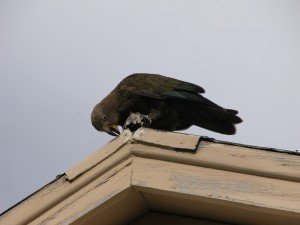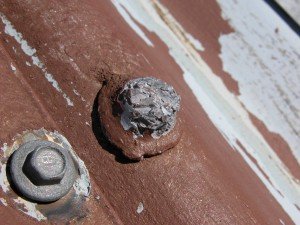The kea’s habit of pecking and pulling at curious materials may be exposing the native bird to dangerous amounts of lead from building materials, reports new research.
 New research in the New Zealand Journal of Ecology surveyed kea from seven areas in South Island New Zealand and found that, of the 88 birds sampled, all kea had elevated lead levels. And 64% of kea sampled in populated areas had blood lead levels high enough to cause lead poisoning.
New research in the New Zealand Journal of Ecology surveyed kea from seven areas in South Island New Zealand and found that, of the 88 birds sampled, all kea had elevated lead levels. And 64% of kea sampled in populated areas had blood lead levels high enough to cause lead poisoning.
The Department of Censervation and Massey University researchers who undertook the study believed that the kea were ingesting the lead from nails and roofing materials in human populated areas. The toxic metal is soft and carries a sweet taste which may attract the typically curious birds to peck at it.
Although kea in remote, unpopulated areas had less lead in their environment – and subsequently lower blood levels – they were still exposed to some amounts of the metal. The authors note that birds in remote areas could still find back-country huts with lead roofing materials and hunter-killed game carcasses containing lead shot or bullets.
Lead poisoning can have serious effects on the nervous, renal, gastrointestinal and reproductive systems. The researchers noticed several birds in the study showing clear neurological signs of lead poisoning: acting irrationally, stumbling clumsily and making unusual vocalisations. Autopsies on a further 20 dead kea were also reported in the study, with 11 showing signs of lead toxicity. More information on lead poisoning in kea, and what can be done to prevent it, is available on the Kea Conservation Trust website.

The size of the overall kea population in the wild is unknown, but the most accurate estimate to date is approximately 3,000.
Media coverage:
NZ Herald: Curiosity may be killing the kea
MSN News: Endangered kea at risk of lead poisoning
Radio New Zealand: Roofing nails put kea at risk of lead poisoning
3 News: Endangered kea at risk of lead poisoning